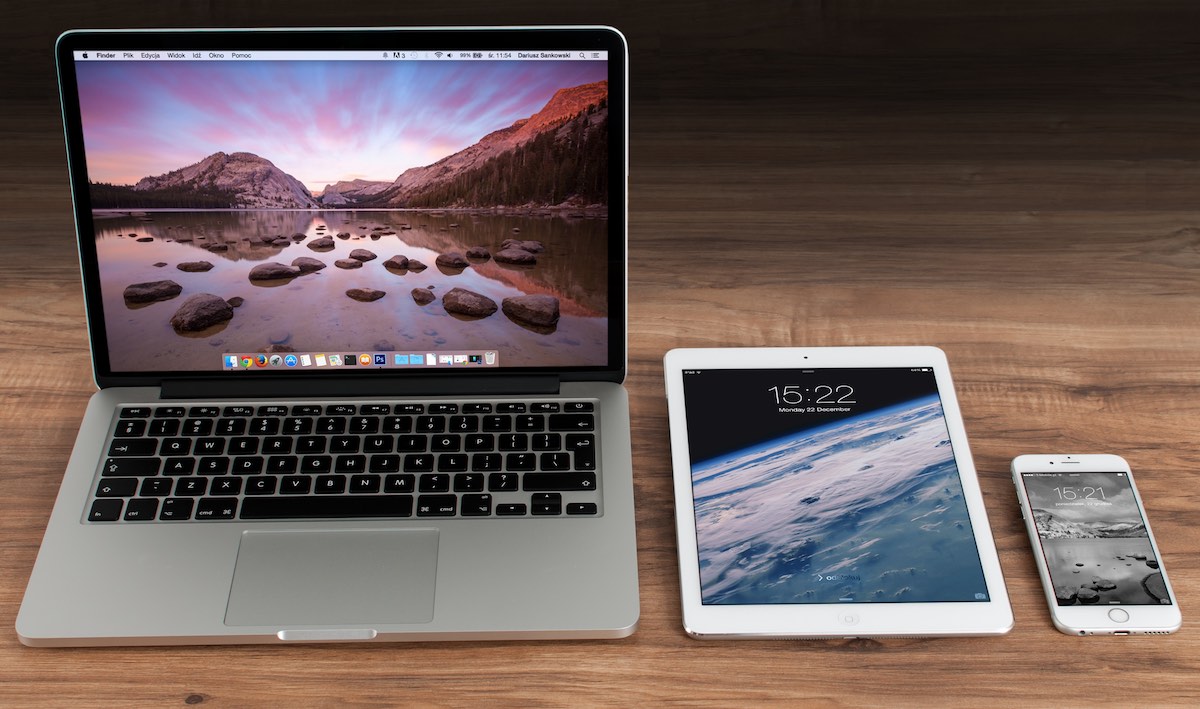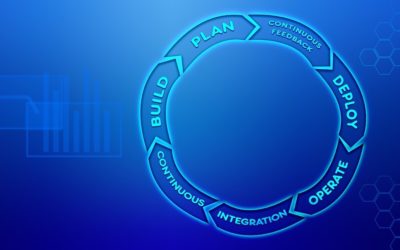Don’t blink.
Did you blink?
If you did, you might have missed it.
Missed what, you ask?
Apple, the embodiment of the high tech “rebel alliance” might have just become the new “empire”.
In non-sci fi geek terminology, it appears that Apple is positioning itself to become new enterprise juggernaut that companies like IBM and Microsoft once were.
I use a MacBook Pro laptop as my primary daily driver computer for work. Nowadays, new hire employees can often choose between a Windows machine or a Mac.
Just by glancing and walking through hallways and different floors the buildings my company currently occupies, I’m seeing way more of Apple’s iconic logo more than I do Microsoft’s Windows icon.
Our company hosts a yearly hackathon event and it’s actually rare to see software developers hack on anything other than Mac laptops these days.
Windows PCs might technically still have more software to choose from, but the software that most people need for work is all there on the Mac platform.
I use Microsoft Outlook, which is Microsoft’s flagship e-mail used by the majority of corporations and organization. I use Microsoft Office for all my word processing, spreadsheet and presentation needs. And they all work natively on Mac OS X.
For browsing the web, there is almost too much choice. I can use Apple’s native web browser, Safari. There’s Mac versions of Chrome, Firefox, and Opera, that all run natively on the Mac platform.
I’ve basically built my professional software development career targeting the Windows platform, yet even THAT doesn’t deter me from using a Mac. I can either use Apple’s “Boot Camp” software, which allows me to create a separate partition on my hard drive and install a copy of Microsoft Windows and create a dual boot system.
Or I can use virtualization software like Parallels for Mac, which allows me to create a “virtualized” Windows environment on my Mac.
in either case, my Mac machine can easily “morph” itself into a Windows machine, and I can install Microsoft’s Visual Studio application, which is their flagship software development tool to write web, native and mobile applications.
Many software developers like using the Mac platform, due to the fact that Mac OS X was built on top of UNIX.
Having UNIX as the core foundation of your operating system allows you to create a development environment ideal for writing open source software. I can easily write C and C\++ software using the free software compiler GCC. I also have access to a wealth of scripting languages like Perl, Ruby, Python, sed, awk, Javascript, Haskell, the list goes on an on.
It’s no wonder that Apple is quickly gaining a strong foothold in many enterprise environments that were once dominated by Microsoft Windows.
But it’s still amazing to see this transformation if you start to research how Apple got to this point.
Apple wasn’t always like this.
History of Apple
In fact, the “DNA” of their company was built on being an upstart, rebel company.
When Steve Jobs and Steve Wozniak, the original co-founders of Apple, released their very first personal computer, the Apple I, way back in 1976, they did it for one specific reason.
They wanted to mass market a personal computer.
We take that phrase, “personal computer” for granted these days, but that phrase really had a powerful meaning and impact back when Jobs and Wozniak first incorporated Apple.
Back in those days, the very notion of a computer you could actually use at home was something that belonged more in a science fiction movie than reality.
Before the dawn of the personal computer age, all computers were massive, behemoth machines that took up whole floors of buildings and cost millions and millions of dollars.
Only the military and big corporations and universities could afford to purchase and house those massive mainframe computers. And it took armies of support staff and engineers to run those machines.
And the company that dominated the mainframe market back in those early years of first generation mainframe computers was IBM. IBM made countless millions of dollars selling these huge bulking machines to corporations across the country and around the world.
It was against this backdrop that Steve Jobs and Steve Wozniak thought about the idea of creating a computer for the regular “Joe the Plumber” guy in suburbia.
They had a burning passion to give the power of a computer to the masses, and the Apple I computer was their first step in doing so.
A little later, they released the Apple II and it sold so well, they were the first company to successfully mass market a computer that one could purchase and bring home and fit on one’s desktop.
By 1984, IBM had already sold millions of their IBM PC (personal computer), and once again, through their sheer marketing power and size, was quickly able to become the new industry standard for personal computers, as they did for the mainframe computer market.
It’s against this backdrop that Steve Jobs introduced their very first Macintosh computer.
If you have some spare moments, you should watch the lost video of Steve Jobs introducing the first Macintosh to the public at large.
You’ll get a better sense of how Job portrayed his company, Apple Computer, as King David and IBM as the giant Goliath that needed to be challenged, as he introduced the first Macintosh computer to the stage.
He also released the famous 1984 Super Bowl commercial where he portrayed Apple as the lone rebel running away from the Orwellian stormtroopers, fighting against the hegemony of the IBM PC market.
From the very beginning of Apple’s corporate history, Jobs wanted to portray and market Apple as the young rebel company that fought against the “establishment”.
People who chose to purchase and use Macs, likely purchased them because they liked to equate themselves as being part of that young “rebel alliance”.
Jobs was soon ousted from his own company, by the Apple board of directors, in 1985.
He decided to sell all his shares of Apple and start up a new “upstart” computer company called NeXT Computers.
Jobs might have been booted out of his own company, but his sense of rebelliousness and independence stayed with him forever.
Ironically, Apple decided to purchase Job’s company, NeXT, in 1997, so they could use the NeXT operating system as the basis for their next generation Mac OS X, which continues to power Mac machines to this day.
It couldn’t have been better timing for Apple. Just a year before, Apple almost went bankrupt. Microsoft dominated the tech landscape with their Windows operating system and helped propel Microsoft to replace IBM as the new tech juggernaut of the IT world.
Once again, when Jobs returned to Apple, he marketed Apple again as the “rebel” company fighting against the establishment, the establishment this time, being the partnership of Microsoft and Intel, aka “WIntel”.
He even created the famous marketing campaign “Think Different”, using famous figures like Albert Einstein, Dr. Martin Luther King, Ghandi, Amelia Earhart and others and equating their particular manifestation of independence and free thinking with Apple.
When Jobs introduced the iPod in 2001, it began the steady climb of popularity and frenzy for new Apple products. There were lots of other mp3 players on the market by the time Job introduce the iPod, but none that were easier to use and slickly designed as the iPod.
Once again, it put Apple back on the map as the “cool upstart” company and millions of people bought the iPod in droves, and thus beginning the skyrocketing climb of revenue and profit for Apple.
It helped Apple monopolize the whole digital music player market and helped to create what was known as the “halo effect” in marketing.
People who bought iPods would also likely consider purchasing other Apple products like Macs. The popularity of one Apple device would help boost the popularity of other Apple devices, thus helping to drive even more sales and revenue to Apple’s bottom line.
Later, when Jobs introduced the iPhone and iPad, Apple firmly established itself as THE uber cool consumer technology company.
It also helped to attract droves of new software developers to the Apple platform. When Apple announced a software development kit for the iPhone in 2008, it suddenly opened up a whole new world of opportunity for software developers.
Suddenly you could write software for a huge market of hungry consumers wanting to try out the latest and greatest games and software for their new iPhones.
Even better, you didn’t have to deal with the hassle of packaging, distribution or mailing of your software … consumers would download your software digitally through the App store and minus the 30% cut Apple receives from the digital sale, would end up in your bank account.
Writing software for the iPhone suddenly became a new digital goldmine of opportunity for many software developers and companies.
And the key to the growth and success of any software company is attracting as many software developers to your platform as possible.
Microsoft dominated the personal desktop computer market for many years because they successfully attracted so many software developers to their Windows platform.
Unfortunately, Microsoft completely missed the mobile smartphone market, perhaps thinking full desktop PCs would continue dominating the tech landscape forever.
Which we know is far from the truth.
The rise of smartphones and tablets has helped Apple bypass Microsoft’s hegemony and dominance of the desktop PC market.
Steve Jobs even famously coined the phrase “Post PC era” to describe what’s currently happening now.
He predicted that desktop personal computers will soon be like what trucks used to be. At the beginning of the automobile era, most people purchased trucks because of their utilitarian nature…you could haul things in the back as well as transport other passengers.
Jobs equated PCs to trucks. They’re still useful to this day, but for the most part, most consumers these days prefer driving cars and sedans to trucks, and the equivalent “car” computer device that most people around the globe use these days on a daily basis, isn’t your full-sized desktop PC or laptop.
it’s your smartphone.
The Apple “Halo Effect”
I’d probably go into a deep panic without having access to my iPhone, even for a day. I’m that reliant on it. It’s my alarm clock. It’s my e-mail gateway. It’s my text message hub. It’s my mapping service. And a million other things that make my life more convenient.
The halo effect of Apple devices is only growing strong and faster.
Many companies these days are allowing people to choose or bring their own computer devices to work, and many workers are demanding to use their iPhone and Mac computers to work, also referred to as the B.Y.O.D (bring your own device) policy.
This “halo effect” of Apple product popularity is making its way into big IT enterprise environments at the largest Fortune 500 companies in the world.
And irony of ironies, IBM, once the mortal enemy of Apple, when Steve Jobs first introduced the very first Macintosh computer in 1984, has become Apple’s strongest ally and customer.
In fact, Apple and IBM recently forged a new alliance and partnership where IBM is specifically writing software for Apple’s iOS devices like the iPhone and iPad for the enterprise business market.
Here’s where I believe the rubber is really meeting the road for Apple. If Apple and IBM continue their partnership, we could very well see more and more heavy duty enterprise-ready applications developed specifically for Apple’s software platform.
I don’t think Apple ever had any intention of targeting the business enterprise market.
But they ended up being so popular with consumers, the Apple halo effect and BYOD helped create a backdoor into this huge new market and revenue source for their coffers.
Think different, indeed…




